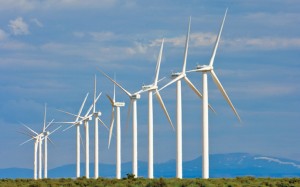California legislators are currently considering legislation (AB 813) to expand our grid across the western U.S., which would help integrate variable renewable energy more economically across a broader geographic region. However, the bill is hung up on disputes around labor and governance, as well as concerns that a regional grid will lengthen the lifespan of coal-fired power plants across the west.
But in the meantime, California’s grid operator has been operating a successful “energy imbalance market” in western states, as explained in this helpful video overview:
While a regional grid would be more effective, the energy imbalance market is helping to spur renewable production across the west. In turn that deployment means more industry support for renewables, even in conservative states.
 Sammy Roth at The Desert Sun penned an engaging deep dive on the issues confronting California and the west if the state expands its grids into traditionally coal- and Republican-dominated states like Idaho and Wyoming.
Sammy Roth at The Desert Sun penned an engaging deep dive on the issues confronting California and the west if the state expands its grids into traditionally coal- and Republican-dominated states like Idaho and Wyoming.
It’s an important issue, because as California produces more renewable energy than it can use locally, it will need markets to export that surplus. Similarly, the state will need to import surplus renewables (like wind from Wyoming and morning sun from Utah) when our wind and solar output is weak.
The upside for ratepayers is potentially huge savings (as Greentech media also described last December), while the upside for environmentalists is more renewable energy capacity without needing backup fossil fuel plants. And long term, more renewable development in these conservative states could change the politics there, as a domestic clean tech industry may lobby for more favorable policies.
But the expansion is held up by two factors: first, concern that grid expansion will throw a lifeline to out-of-state coal-fired plants that would otherwise get shuttered (environmentalists are split on whether that would happen, but California’s grid operator does anticipate a slight increase in greenhouse gas emissions from the plants in the short term, with significant long-term reductions); and second, disagreements over how grid governance would work across such diverse states:
“There’s not going to be any scenario where I would agree to a situation where the California Legislature is dictating policy to the state of Wyoming,” Matt Mead, Wyoming’s Republican governor, said in an interview. “Clearly, Wyoming is the No. 1 coal-producing state. It probably has a different perspective than California does.”
The mistrust cuts both ways. Officials in Idaho, Utah and Wyoming — deep-red states that rely on coal and other fossil fuels and don’t see climate action as a priority — don’t want to give coastal liberals too much power to decide which types of energy they use. Lawmakers in California, Oregon and Washington, but especially California, have the same concern about the red states.
If the governance issues cannot be solved, I wonder if a possible interim solution might be to focus on immediate grid expansion just to Oregon and Washington, given their similar politics and commitment to renewables. Then in future years it could expand to more fossil fuel-dependent states, once the market and governance kinks have been ironed out.
Meanwhile, the article is worth checking out just for the interactive map of every type of power plant in the entire U.S., including pumped storage facilities (I can’t reproduce it on my blog here but you can find it about 2/3 of the way down the article).
Supposedly the California legislature will debate grid expansion later this year, although I understand there’s a lot of skepticism from legislators, particularly about having California policies provide economic benefits out-of-state. But in the long term, it’s hard to see how California can achieve deep decarbonization in the electricity sector without this kind of regional approach.


